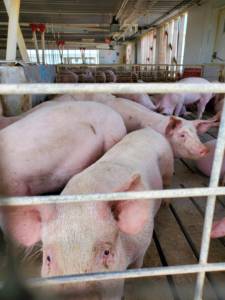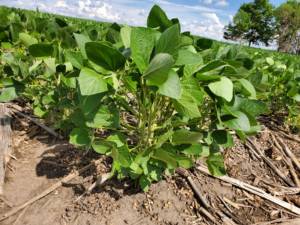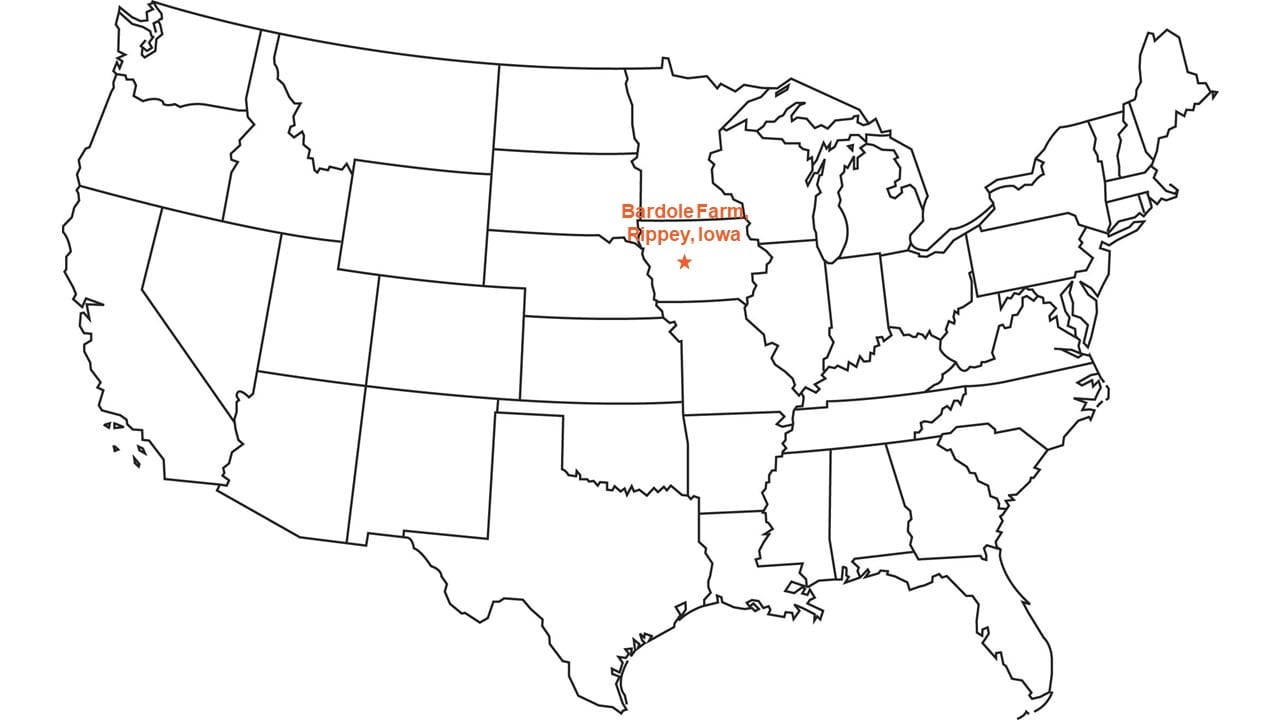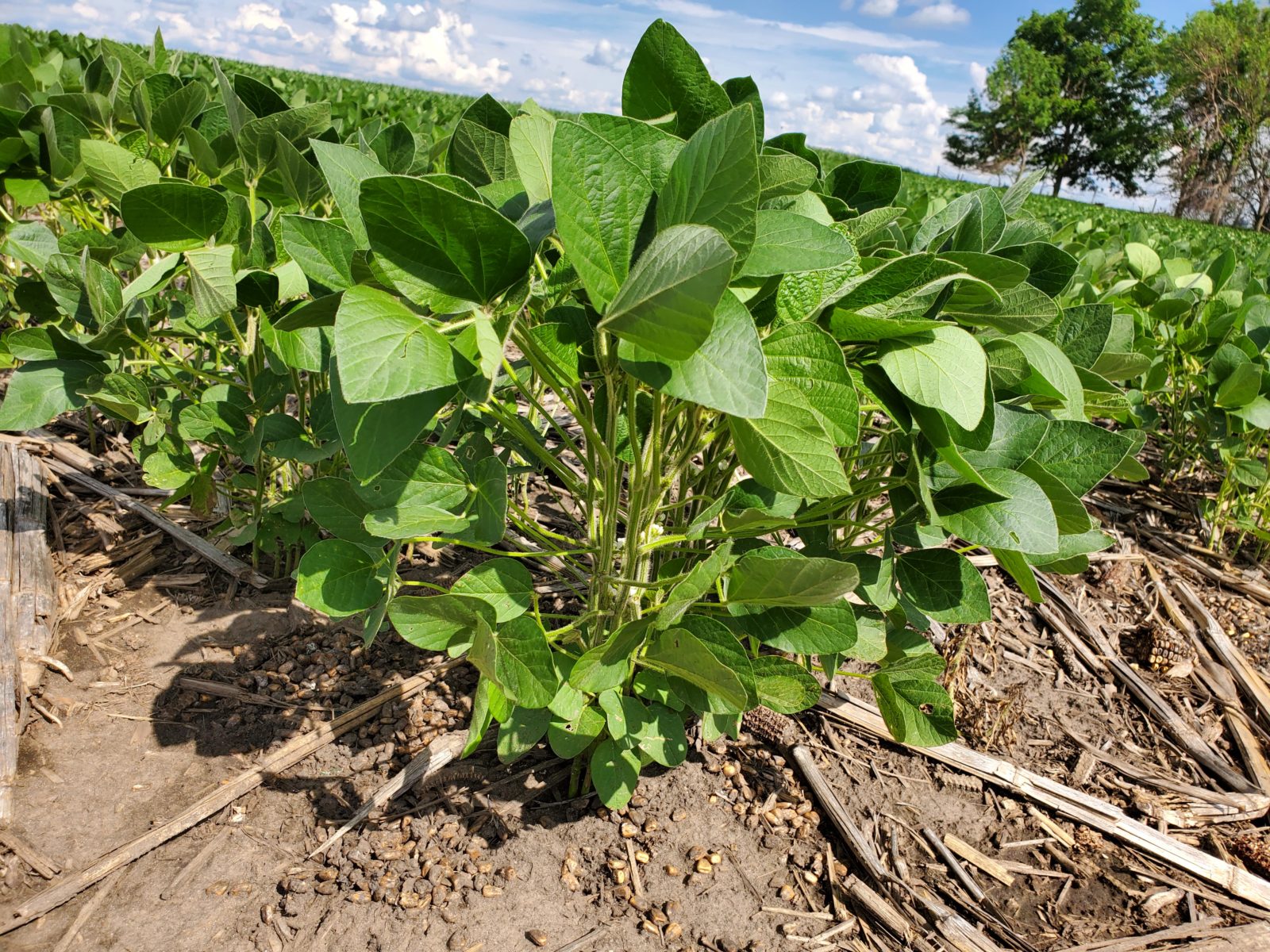 The weather has been extremely dry in our area of Iowa, and that has slowed crop growth. Both our soybeans and corn are now growing in response to any moisture we do get.
The weather has been extremely dry in our area of Iowa, and that has slowed crop growth. Both our soybeans and corn are now growing in response to any moisture we do get.
Fortunately, we received about 2.5 cm, or 1 inch, of rain on June 20, with a few additional showers of .5 cm, or .2 inches, later in the week. That helped the crops perk up, but we need to continue to get that type of rain to replenish the very dry soils. Otherwise within several days we can be back to drought conditions.
Unfortunately, much of the rain falling in Iowa in late June has come with hailstorms. Thankfully, our fields have not sustained any hail damage so far, but I have seen plenty of pictures on social media from other Iowa farmers showing hail damage. The weather during the rest of the season will dictate how crops recover from that damage.
The soybeans are behind where we would have expected them to be, based on when they were planted. However, they are starting to flower, and the rain we have gotten will be critical at this stage.
In mid-June, we applied post-emergence herbicide to the soybeans. We try to rotate herbicides in fields to manage against the development of weed resistance, so we use glufosinate, or Liberty, in our soybeans. In the 600 acres where we had to destroy corn last season, we controlled the first flush of volunteer corn earlier this season. Then, the dry weather prevented further volunteer corn emergence. However, with the rain we have received, we likely will have to make another herbicide application at the end of June to control the flush of volunteer corn that rain will have allowed to germinate.
 That rain allowed the corn to grow quickly. We had already applied glyphosate for post-emergence weed control in corn before it started growing. Then we focused on monitoring its growth and the weather forecast to determine if we want to apply more nitrogen to the corn. Where we believe we will have enough moisture for a reasonable crop, we will supply additional fertilizer. We ended up making that investment in about half our corn acres that got additional rain in late June. However, for the other half of the acres, where it appears the drought conditions will continue, we decided not to invest more inputs in the corn crop.
That rain allowed the corn to grow quickly. We had already applied glyphosate for post-emergence weed control in corn before it started growing. Then we focused on monitoring its growth and the weather forecast to determine if we want to apply more nitrogen to the corn. Where we believe we will have enough moisture for a reasonable crop, we will supply additional fertilizer. We ended up making that investment in about half our corn acres that got additional rain in late June. However, for the other half of the acres, where it appears the drought conditions will continue, we decided not to invest more inputs in the corn crop.
We continue to care for the pigs, which have grown to an average of about 80kg, or 175 pounds. They have recovered from the health issues they had earlier. However, we’ve had extended periods of very high temperatures and hot weather, even at night. That type of weather is hard on them, but following the rain, nights have cooled off a bit, which is good for them.
Right now, while the crops are growing, we have less going on in the field. The lull is allowing us to catch up on equipment repairs, projects like putting up electric fence in the grove where my son Schyler’s Scottish Highland cattle are grazing, and attending industry meetings.
We are enjoying the slower pace of work while we can. In a few weeks, we will be making decisions about additional crop inputs, preparing to manage cover crops and hoping that we continue to get rain.

